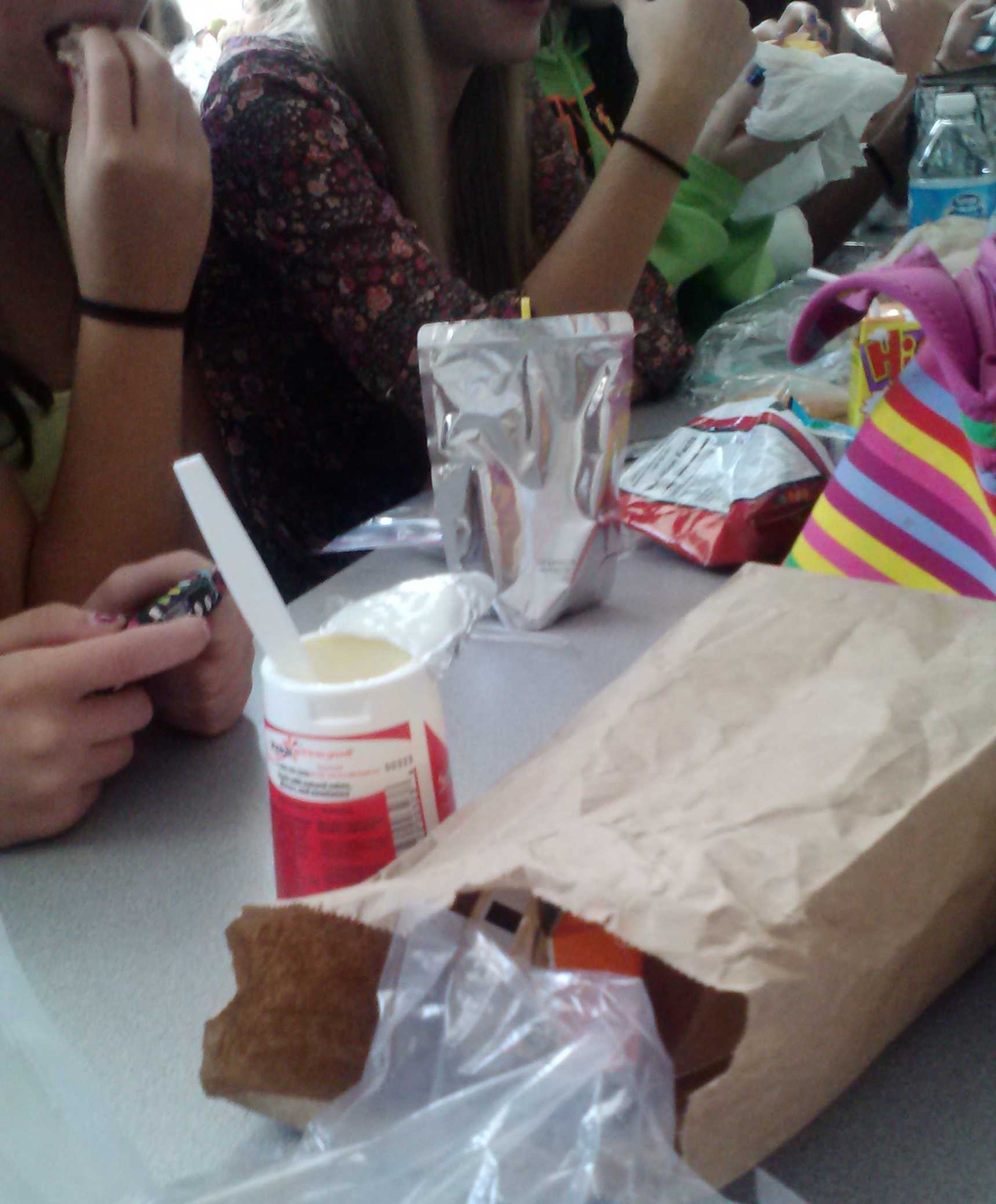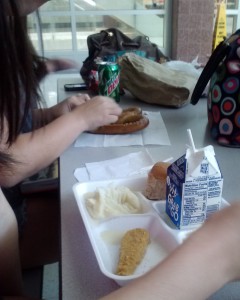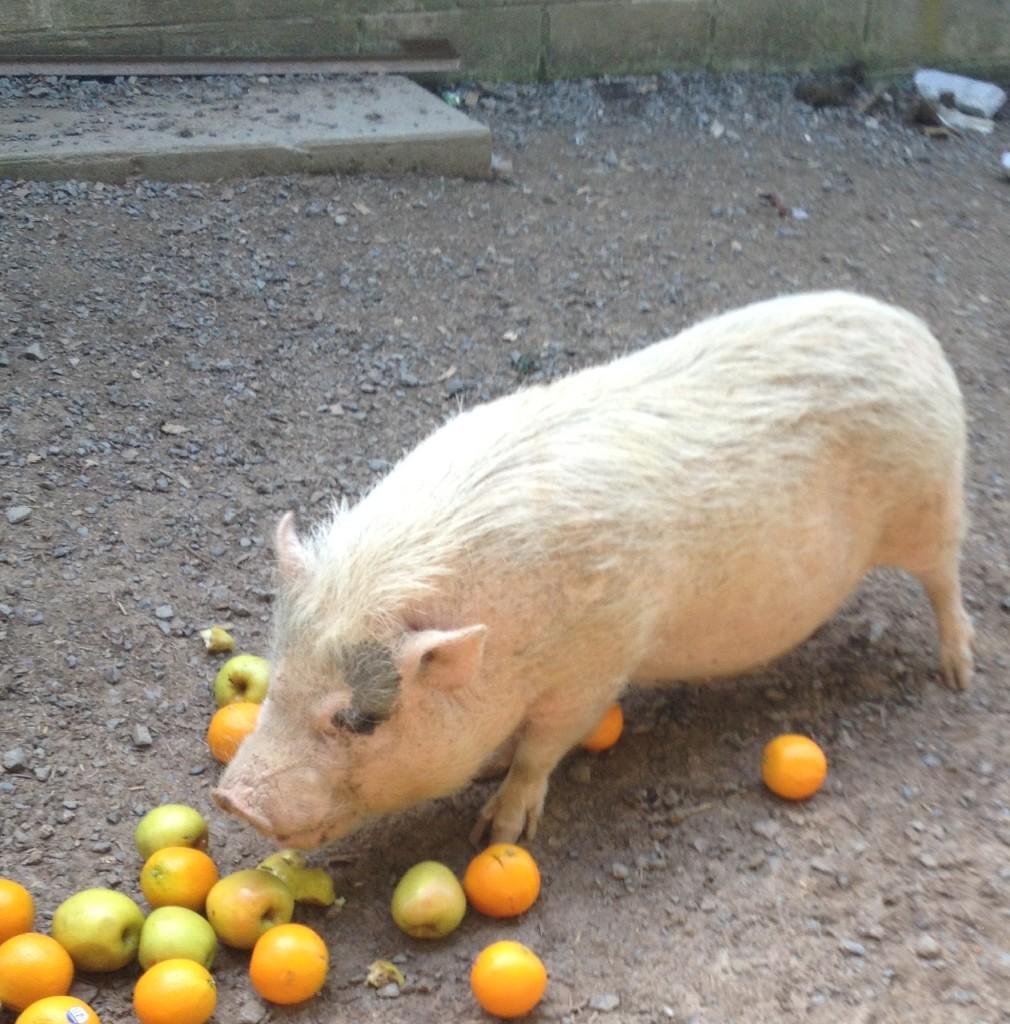Buyers vs. packers: who wastes more?
September 14, 2013
At the end of the lunch shifts, trash cans overflow with fresh fruit, uneaten sandwiches, half-eaten bags of potato chips, and a wide variety of other foods that students didn’t get the chance to eat, or simply didn’t want to eat. Who is wasting all this food?
Not everybody eats all of their lunch every day, but who is the real culprit? Mrs. Tracy Cassidy, a staff member who monitors first and second lunch shifts, said, “When people bring their lunch, they eat their lunch. But when people buy their lunch, there’s definitely more food left.”
Wasted food is a concern throughout the country. In The Wichita Eagle, reporter Rick Plumlee wrote an article about the worries of wasteful eaters in Kansas schools. According to the article, in 2011 there were 362,000 lunches served in Kansas daily, and supervisors say that a large portion of the food was trashed.
“Normally I pack a little bit: a sandwich, carrots, applesauce, a cheese stick and juice,” said junior Natalie Rupinski. “I always eat all of it, every day.” Rupinski says if she ever were to have leftovers, she would give them to someone else or save them for later.
“I usually eat three quarters of my lunch and put the leftovers in the trash can,” junior Colleen Lafferty said.
“Packers eat healthier because they have an option of what to bring. Buyers have to choose and it’s not always the best stuff, like stuff from the vending machine, nachos, and pizza,” said Lafferty.

Rupinski agreed. “[Packers] put in lots of fruits and vegetables or whatever they want that’s healthy,” she said.
The lunch line contains healthy options as well, but this doesn’t assure that the students are willing to eat them.
“The only pattern that we see is if the menu has the foods the students like they will purchase, otherwise they won’t buy at all,” said Mrs. Tina Ford, Cafeteria Manager.
Due to the Healthy Hunger-Free Kids Act of 2010 issued by the National School Lunch Program, cafeterias across the country require students to take a piece of fruit with their lunch. This seems to be increasing the amount of wasted food that ends up in our trashcans.
“The other day the cafeteria had fresh hand-picked plums,” Cassidy said. “The kids would take two, and then they’d just throw them away. That’s so wasteful!”
Mrs. Renata Emery, a guidance counselor who monitors third lunch shift, agrees. “I think that it’s just sad, really. There are places where kids don’t have the food we have, and here we are just throwing it all away.”
If schools were to lift these healthy eating regulations, would that make a difference to the amount of wasted food? Last year at LHS, staff member Karen Burall came up with a system to recycle unwanted food. Students could place their uneaten fruit in a specially marked bin that would be taken home to feed Burall’s pig, Emily.
“Originally it just started out by placing the fruits on the windowsill to take home to Emily, because she really loves those bananas, apples and oranges,” Burall said. “And it just went forward from there. It’s a great system, especially with fruit being so expensive these days. When kids don’t want it, they can put it back toward nature. [Emily] loves it; it’s a real treat for her.” Perhaps donating food is something that should be considered in more schools; that is, if they are not willing to eat it.
However, programs like this don’t work in all situations. Items that have been opened but only half-eaten can’t be donated due to food safety issues.
But this doesn’t mean there aren’t any ways to save the wasted food. Plumlee explained that many Kansas schools have tables where students can place their opened, unwanted food to be shared with other students who may want it. It is ideas such as these that can significantly reduce the amount of daily waste.
“If kids were able to pick what they want to eat, healthy or not, they’d probably be more likely to eat it all. That could be an easy fix to the problem,” Emry said.




